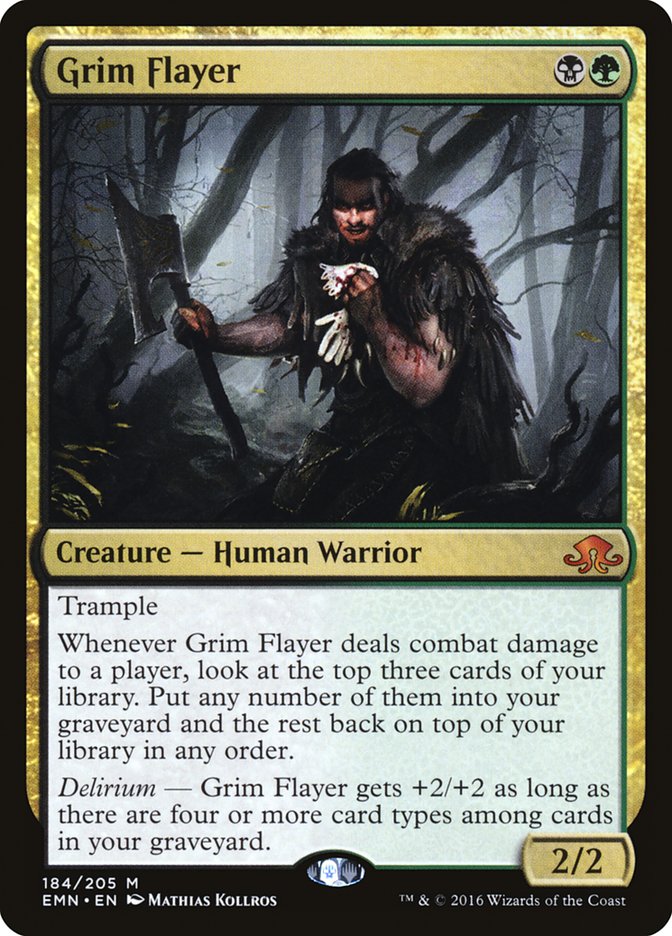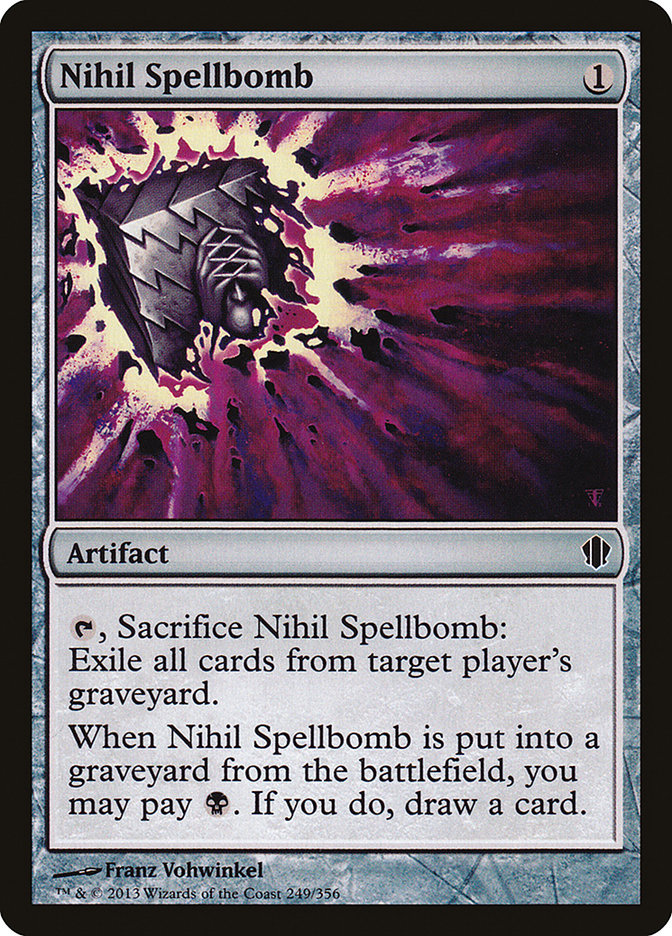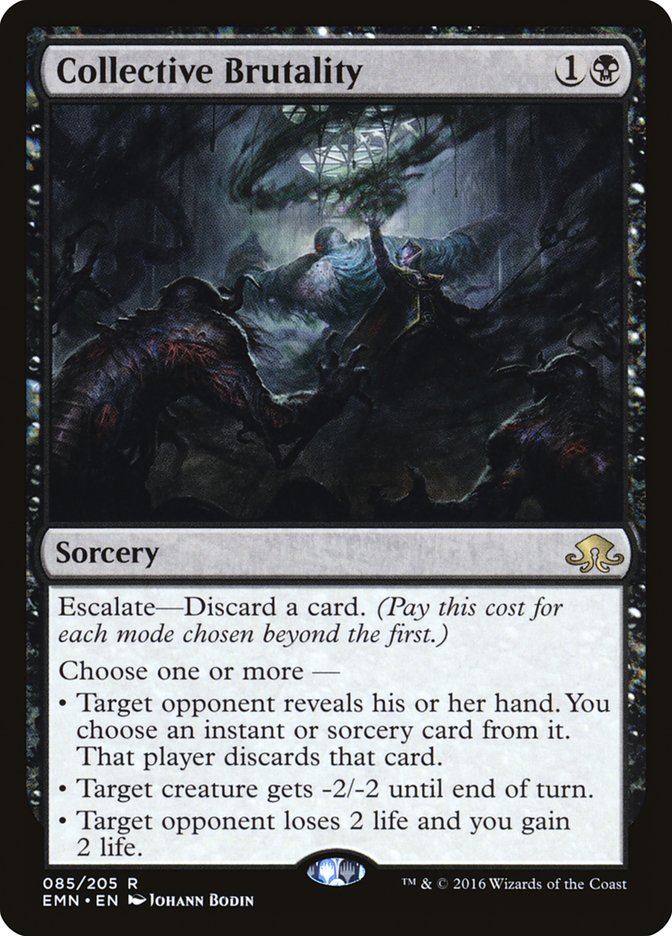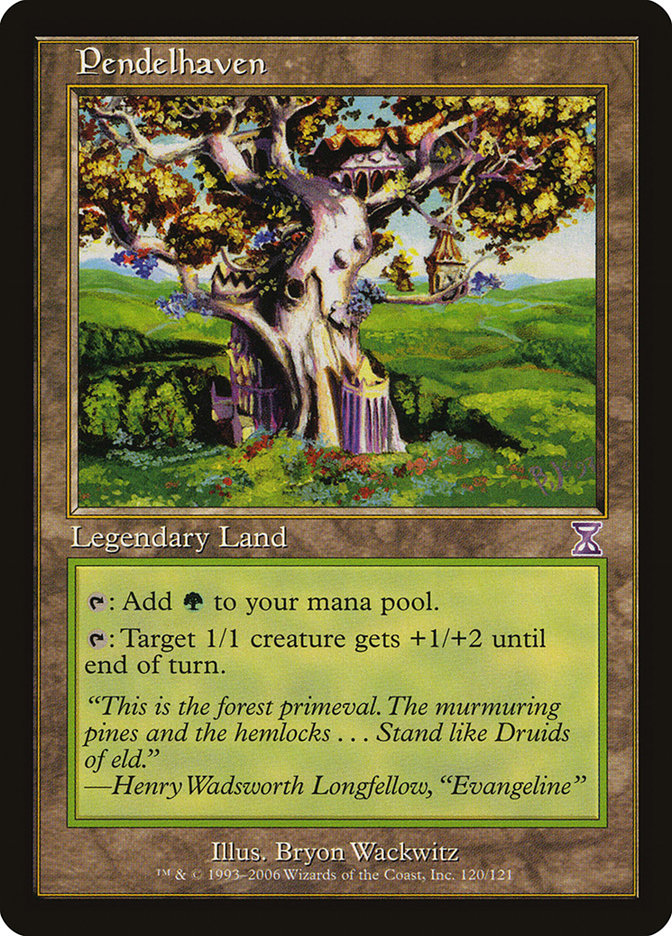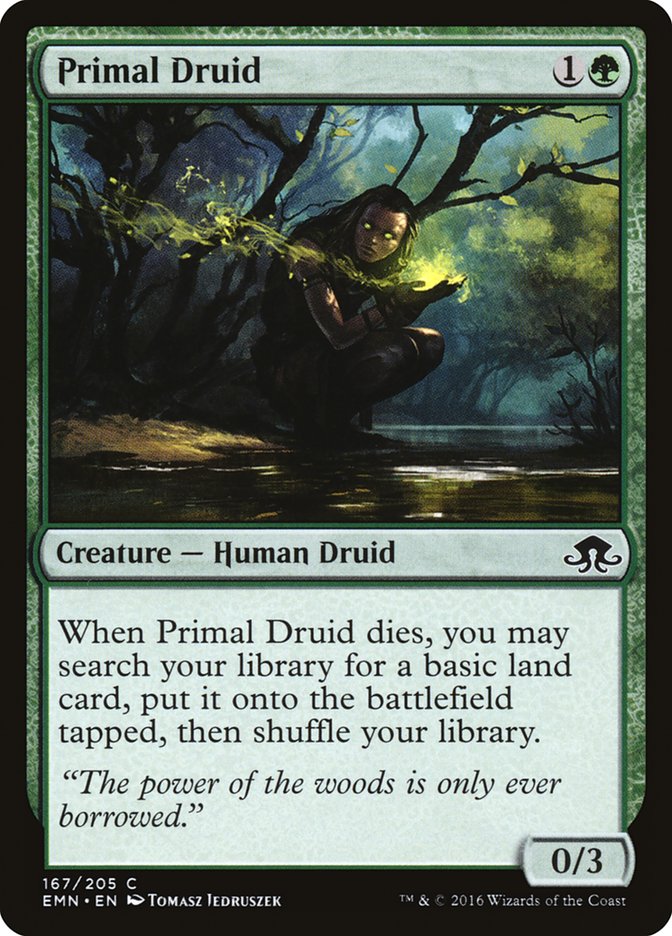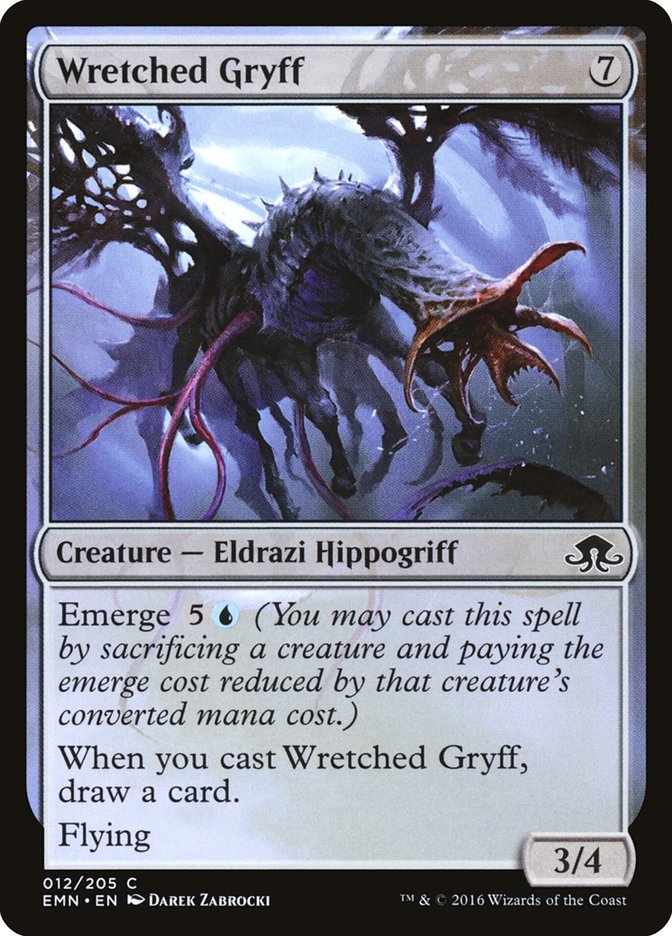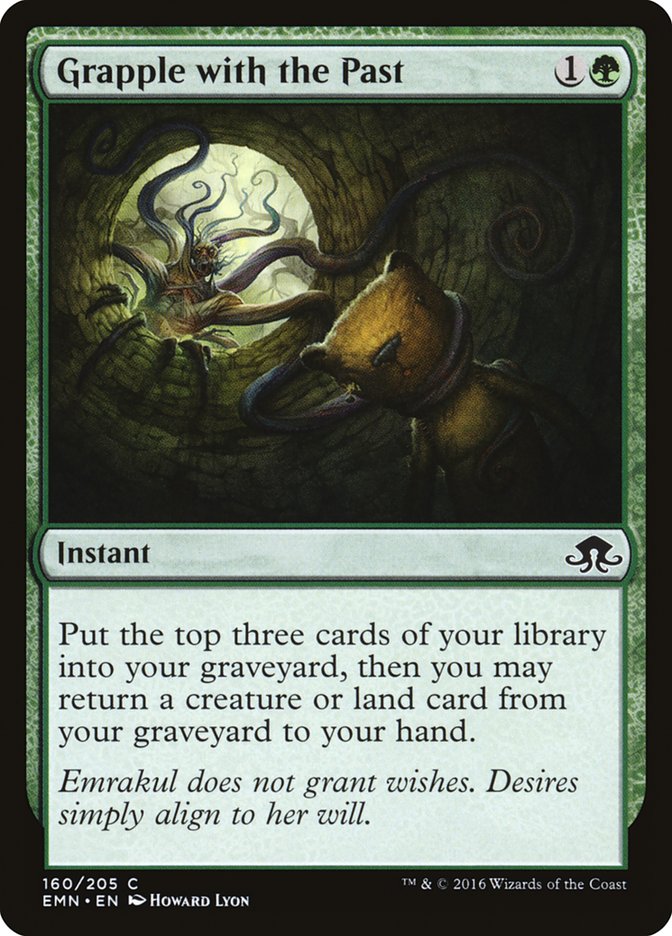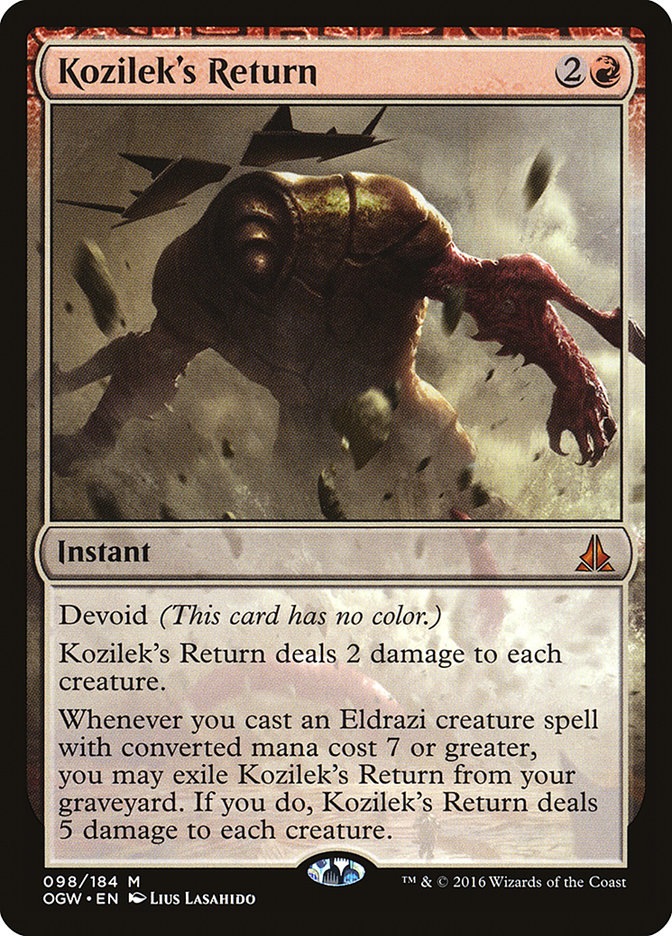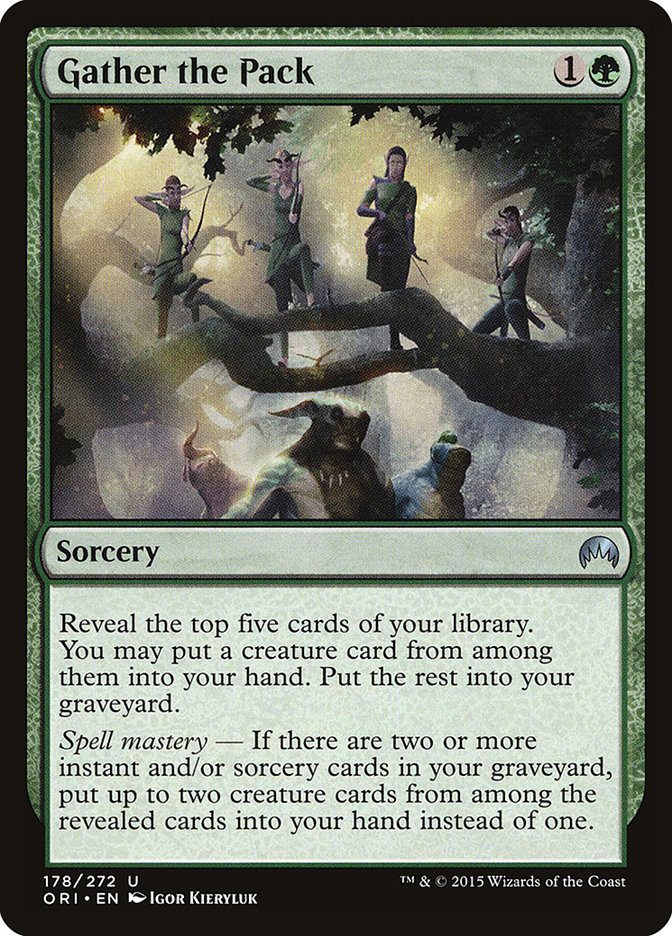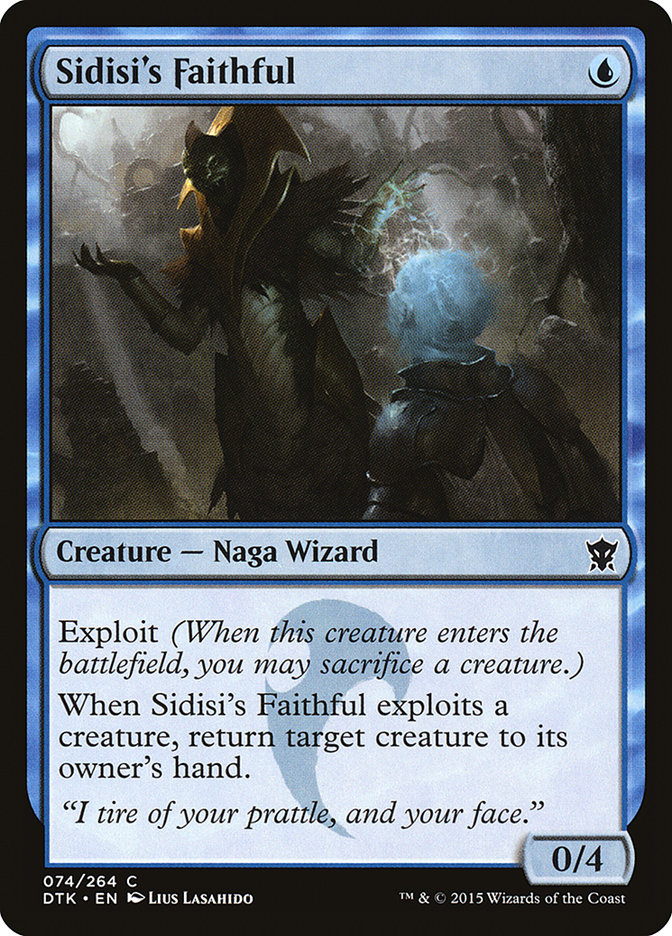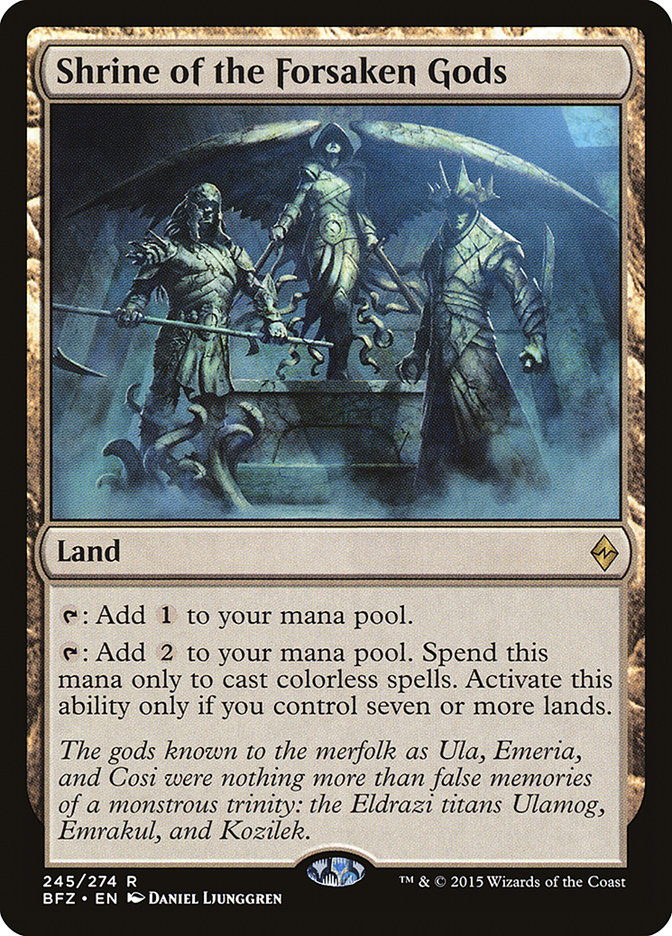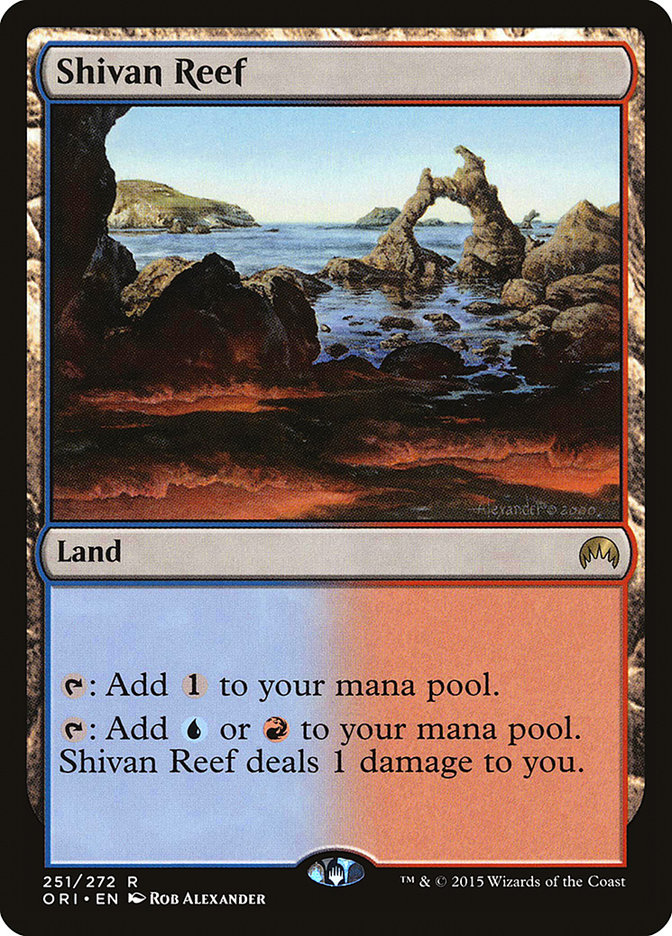Fourth at the Season Two Invitational.
So close and yet so far.
Fourth place is clearly a great result, but it’s hard not to be swept up in the “PCQ” chants when staying in a room with Brad Nelson all weekend. Neither of us were able to close on Sunday, but now that I have functionally the best start possible for Season 3, I suspect I’ll be making a go at it, since there are few distractions between now and the end of the year other than #PTKLD in October.
So how did I arrive at the decks I played this weekend?
Modern
This is sort of the easy one. I laid out a lot of the information last week about how I was approaching Modern. Essentially, I knew that my favorite blue strategies were poorly positioned in the face of decks like Dredge and Burn alongside their other common problems. My exploration of Jund throughout the week leading up to the quarterly MOCS proved to me that Grim Flayer was an exceptionally powerful Magic card and the fair grindy decks were in a relatively fine place.
The issue was that Lightning Bolt was underperforming relative to its expected power level. With a surge in decks like Death’s Shadow Aggro, Bant Eldrazi, and Dredge, Lightning Bolt was simply performing fine instead of being its usual exceptional self with so many large creatures lurking around. Further, Grim Flayer has excellent synergy with Lingering Souls, making my gravitation towards Abzan pretty natural, since I wanted to play the aforementioned and Path to Exile looked well positioned. I didn’t deviate too far from the deck I wrote about last week as a starting point, but here’s what I registered for the #SCGINVI after getting some help from Gerry:
Creatures (12)
Planeswalkers (3)
Lands (24)
Spells (21)

Things to note:
Grim Flayer was very good for me, but Gerry was adamant that they were bad and go against the spirit of Abzan to some degree. I think that the truth likely lies somewhere in the middle, but it’s important to talk about his point.
Abzan is far more controlling than Jund, looking to interact before deploying haymakers like Lingering Souls and Siege Rhino. In some regard, this goes against what Grim Flayer encourages, making aggressive trades to enable the card to connect, which should in theory find more action to keep trading every turn until your opponent dies or is out of gas. It can also be fairly difficult to turn on delirium, particularly the way the deck is constructed now. Despite there being two Nihil Spellbombs, unless you have a creature die, it isn’t particularly likely that Grim Flayer will be turned on immediately or even after the first time he connects.
Of course, Flayer’s power level is also pushed by the presence of Lingering Souls. Milling a Lingering Souls with Grim Flayer is off the charts and that alone makes playing the card appealing to me. Its role as a two-drop also can’t be understated for your ability to be able to double-spell in the mid-game. I think Grim Flayer certainly has a place in Abzan; I just wouldn’t be shy about sideboarding it out or shaving it in matchups where your deck becomes more controlling and it will be more difficult to connect. For now I’m fairly confident that three is the right number.
Again, this card was mostly a free hedge against Dredge that enables delirium. I’m not exactly sure where Dredge is positioned in the Modern metagame. The deck is absurdly powerful, yet I didn’t play against it in the tournament. Tom Ross made the Top 8 of the Invitational and Ross Merriam made Top 8 of the Open, yet there didn’t seem to be many copies in the field. It’s unclear whether people were afraid of being hated out or are simply sleeping on the deck. In any case, Dredge is very good and Nihil Spellbomb is a fine enough card in a variety of different places that I wouldn’t be upset about registering it in my maindeck again.
Collective Brutality is amazing and performed admirably for me. I wouldn’t be opposed to trying to fit a second copy for how high-impact it is against the likes of Death’s Shadow Aggro, Infect, Melira Company, and Burn especially. Again, completely ignoring synergy with Lingering Souls, Collective Brutality is excellent in B/G/X midrange decks due to how much slower they are than the decks you are trying to fight. Any way to trade a glut of cards for only two mana is amazing for keeping the battlefield at parity and prolonging the game to the point where your superior draw steps and card quality can begin to take over. Brutality is an absolute monster against Burn and is effective against any deck that has cheap creatures and high-impact spells. This card needs to be in more decks.
This is a bit of a weird one, and it’s all Gerry T. Basically Grim Flayer warps our mana a bit to the point where colorless lands are unacceptable and the stock of a second Twilight Mire goes way up. To facilitate this, adding another green source makes sense, but there’s basically no point in playing a second basic Forest, particularly with the complete lack of Blood Moon currently in Modern. Pendelhaven never punished me and probably won me a game straight-up, which is good enough for me.
Sideboard
I used every card in my sideboard and they were all generally fine and covered a plethora of strategies. The weird thing about Jund and Abzan is that many of their sideboard choices are fairly analogous and in particular any “anti-grindy” card is likely to be good if it sticks around for any relevant time frame. I chose to play Gideon, Ally of Zendikar for the event and it carried me through a match against Jeskai, but it isn’t clear that it is significantly better than a Painful Truths, Thrun, the Last Troll, etc. That being said, I certainly favor the options that just kill my opponent straight up rather than simply generating advantage.
Standard
I find this one a lot more interesting. Here is a link to the deck tech I did on Temur Emerge.
Creatures (17)
- 2 Pilgrim's Eye
- 1 Sidisi's Faithful
- 3 Emrakul, the Promised End
- 3 Wretched Gryff
- 2 Elder Deep-Fiend
- 2 Ishkanah, Grafwidow
- 4 Primal Druid
Lands (22)
Spells (21)

Temur Emerge is one of the hardest decks I’ve ever played, and I’m constantly learning more about how to pilot and build the deck the more effort I put into it. I wasn’t lying when I said that I knew my deck was great but that I could only hope to live up to its potential. I suppose that my playing it somewhere around 75-80% capacity was good enough this weekend, but there’s still much more to be done.
I basically got here from everything I learned from the Pro Tour. Owen’s slant towards being a “combo Emrakul” deck is certainly appealing, as Team Eureka’s deck at the Pro Tour was already heavily interested in the “turtle until our single Emrakul” strategy. We certainly missed incorporating Nissa’s Pilgrimage as a means to be more of a hard ramp deck, and it goes a long way towards supporting the gameplan of simply set up and get ready to hard cast all of your over-powered nonsense.
Right after the PT I started with the various R/G Ramp decks that I saw perform well there, but basically concluded they were bad. To some extent, they are “the best” at just hard ramping, but their interest in incorporating some small ball interaction like Fiery Impulse, Collective Defiance, or means to stall with Hangarback Walker just aren’t powerful enough bridges. Further, they are terrible Kozilek’s Return decks with basically no ability to turbo out a sweeper unless they can spike a six-mana Emrakul.
In essence, I discovered that they were too linear similar in a sense to Andrew Brown’s Temur Emerge deck, just in the completely opposite direction. Not having access to Elder Deep-Fiend and Wretched Gryff means that you can only play one way, which is be completely reliant on a fast Emrakul to win you the game. Further, Andrew’s deck and its lack of access to Emrakul meant that you were always trying to wrestle into scenarios where you can soft-lock your opponent just long enough to get over the finish line. There would ultimately be situations where you run out of resources or one of the emerge creatures meets an untimely death, making it remarkably difficult to piece together lethal damage.
So basically I built the deck to be able to do everything. Primal Druid is a much better early creature for advancing your gameplan as a whole than Gnarlwood Dryad by being a serviceable blocker with upside and solid emerge fodder that ramps you towards your big baddies. My focus on Wretched Gryff in the first game is directly tied to Primal Druid. Being able to turbo out a quick emerge creature is of utmost importance against Bant Company due to the fact that a large flier bricks most of their early offense while also threatening quick Kozilek’s Return triggers and generating additional resources and velocity. Playing a turn 4 Gryff off Primal Druid is an excellent sequence for setting up Temur Emerge, and bridging the gap in the first game against aggressive decks is far more important than playing with the raw power of Elder Deep-Fiend. All I need to do is try to survive until Emrakul.
Another benefit of Temur Emerge is that their Emrakuls are actually devastating because you can turtle up and build a battlefield position. Emrakul eating your opponent’s best creature is good, but it won’t always win you the game. On the other hand, if you can play a Promised End with a handful of Spiders on the battlefield, then odds are pretty good you can destroy your opponent’s entire battlefield position before going on the offensive.
Things of note and general gameplay:
Not to be a broken record, but again, this deck is really hard. I think the number one aspect that I’ve grown to appreciate is that Temur Emerge rewards patience above all else. If you aren’t dying, there’s no real reason to make a move, because you’re ultimately working towards something far superior to basically what any other opponent is doing (Mindslaver, Wrath of God, Time Walk, then kill you, if you were wondering).
There are two big cards that illustrate this point: Elder Deep-Fiend and Grapple with the Past. Elder Deep-Fiend is clearly an excellent offensive tool, but generally speaking I will never deploy it simply to build my battlefield position, especially against Bant Company. I want it to be a fail-safe to keep myself insulated from any kind of super-aggressive sequence (end-step Collected Company, untap Reflector Mage, Dromoka’s Command, etc.) and to potentially trigger Kozilek’s Return at a key moment. Ishkanah, Grafwidow is the big hero here, of course, as it is typically the line of defense that keeps things in check so that the game slows down and you are afforded these kinds of options.
Grapple with the Past gets substantially better as the game progresses and rewards you holding it as long as possible so that you can set up turns to end the game. Unless you are aggressively digging for lands or need to spike a Kozilek’s Return or another defensive measure like delirium on Ishkanah, you should be trying to hold Grapple as long as possible. Grapple being another copy of Emrakul, Elder Deep-Fiend, or Ishkanah, Grafwidow later in the game is how you go bigger and longer than any other deck in the format. As a result, it is important to never blow your Grapple when given the option.
General Sequencing
Grapple gets better with more options of course because it uses the entirety of your graveyard as a resource. Vessel of Nascency and Gather the Pack can only utilize what they reveal; as a result you would rather lead on the two latter cards to build your graveyard as much as possible. Generally speaking, the beginning of the game is going to involve expanding your graveyard to work towards delirium and to ramp with Nissa’s Pilgrimage and Primal Druid. Being aware of your status towards delirium is exceptionally important for how you play your cards early and deciding what to take from your various enablers. At times it may even be vital that you take nothing from a Gather or Grapple so that you can play a delirium Ishkanah on-curve to survive or to enable a Traverse the Ulvenwald. It’s important to always be aware of how many and what your types are and to know how to give yourself the best chance of achieving early delirum with your sequencing.
Specific Cards
Gather the Pack is the weakest card in the deck. It’s nice when it hits, but the math doesn’t particularly support it and you will shave it fairly frequently in sideboarding. I would expect to work towards two copies in the future, but it is still a solid second-turn play to start setting up your graveyard as well as being an excellent draw later in the game the majority of the time. It is fairly easy to hit spell mastery, but you are never a favorite to hit two creatures.
Sidisi’s Faithful is a bit of a catch-all creature/spell hybrid. I’ve had two copies and will sadly likely be cutting it, but it serves a respectable role of being an additional creature to hit that functions as cheap interaction that synergizes with Primal Druid. Faithful also has a pretty high ceiling for bouncing Emrakul or another of your powerful creatures, although it comes up less often.
I already covered this a bit, but I do want to note that Gryff’s primary function in the deck is to keep it as fast and lean as it can be for the first game and certain matchups like Bant Company. I will frequently sideboard out Wretched Gryff to accommodate more powerful options like additional Deep-Fiends and Lashweed Lurker against decks that give you plenty of time to set up and play Magic.
This is basically just a strict upgrade to something like Corrupted Grafstone. Primal Druid enables Temur Emerge to ramp super-hard with physical lands on the battlefield, which makes Shrine of the Forsaken Gods a ramp spell. It can be used to cast Elder Deep-Fiend with seven lands, works favorably with emerge and various other spells in the deck, and can be found off Traverse the Ulvenwald to set up fast Emrakuls.
My other lands – I kinda blew it here last minute. I cut my 23rd land and my fifteenth green source, which was certainly a mistake. I lost two games to just mulliganing to oblivion or not having green mana, which isn’t really excusable. Simultaneously, Shivan Reef was absolutely terrible and I don’t see too much of a reason to have additional red sources in my deck, other than it being nice to naturally draw them from time to time.
One of the best cards in the deck, since it is a functional proxy for Emrakul or Ishkanah whenever need be. I’ll be moving to three or four copies surely, since it is basically the best draw in the deck post-turn 5 or 6, all the while making your deck smooth and fixing your mana.
The Sideboard
Temur decks’ sideboards have a longstanding tradition of being generally poor, and I don’t think I did an exceptional job here either. Noose Constrictor is my nod towards U/R Thermo-Alchemist, since it allows you to get aggressive against them. It is also excellent against traditional Bant Company, since it brick-walls their blockers and lets you generate a stable battlefield position. On the other hand, they are fairly weak to Boss Humans and Bant Humans due to the fact that the Human decks quickly outsize it.
My various additional threats and Evolutionary Leap are pretty close to being right. They are largely there to attack Infinite Obliteration decks and anyone that is trying to disrupt my primary Emrakul plan. Evolutionary Leap in particular is pretty awesome against all the black decks and plays great with Primal Druid. I’ve noted in the past that all I want to do is draw lands with Evolutionary Leap on the battlefield, and Temur Emerge is excellent at amassing mana to utilize all the resources.
Kiora, Master of the Depths performed poorly because I didn’t do all of my homework. All of the black Delirium decks are starting to incorporate To the Slaughter, making a planeswalker strategy a complete dud. Whoops.
Negate is fine, but I think that I also want something to fight Emrakul mirrors. While Elder Deep-Fiend is an effective strategy for keeping an opponent off Emrakul for a reasonable amount of time, it’d be a lot easier if I could just counter their Emrakul and remain the more powerful deck.
That all being said, I think I’d start somewhere around here for my new sideboard:
2 Negate
With Nissa, Vastwood Seer as an additional threat, I’ve finally assembled all of my favorite cards being in the deck, which is certainly a relief. It’s not clear yet whether I should be playing some sort of cheap interaction. I chose not to play Fiery Impulse at the Invitational because it is so low-impact, and Radiant Flames would simply be for Boss Humans, which I didn’t expect in large numbers.
Jace, Vryn’s Prodigy puts less stress on timing your Grapples well in the early-game and creates more lightning rods for your opponent. Additionally, turtling up and ultimating the Telepath Unbound becomes a legitimate strategy.
Clash of Wills seems like a decent hedge that also solves my Emrakul problem to some extent. It is possible that I could go as deep as Summary Dismissal, but that card feels wretched against every other deck that isn’t trying to Emrakul me. That being said, perhaps if Distended Mindbender continues to generate traction, I might be singing a different tune.
Overall, though, I had a blast with Temur Emerge and left the event knowing that I have even more to learn. I’ll certainly be registering it in two weeks. I just have to figure out how to fix some of the kinks first.


